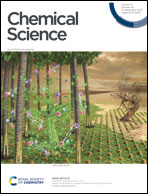Synthetic exploration of electrophilic xanthylation via powerful N-xanthylphthalimides†
Abstract
Organic xanthates are broadly applied as synthetic intermediates and bioactive molecules in synthetic chemistry. Electrophilic xanthylation represents a promising approach but has rarely been explored mainly due to the lack of powerful electrophilic reagents. Herein, synthetic exploration of electrophilic xanthylation via powerful N-xanthylphthalimides was investigated. This strategy might provide a new avenue to less-concerned but meaningful electrophilic xanthylation in organic synthesis. With the help of these powerful reagents, electrophilic xanthylation of a wide range of substrates including aryl/alkenyl boronic acids, β-keto esters, 2-oxindole, and alkyl amines, as well as previously inaccessible phenols (first report) was achieved under mild reaction conditions. Notably, this simple electrophilic xanthylation of alkyl amine substrates will occur in the desulfuration reaction, consistent with the previously reported methods. Similarly, xanthamide and thioxanthate groups could also be transformed into desired nucleophiles via this electrophilic reagent strategy. The broad substrate scope, excellent functional group compatibility and late-stage functionalization of bioactive or functional molecules made them very attractive as general reagents which will allow rapid incorporation of SC(S)R (R = OEt, Oalkyl, NEt2 and SEt) into the target molecules.



 Please wait while we load your content...
Please wait while we load your content...